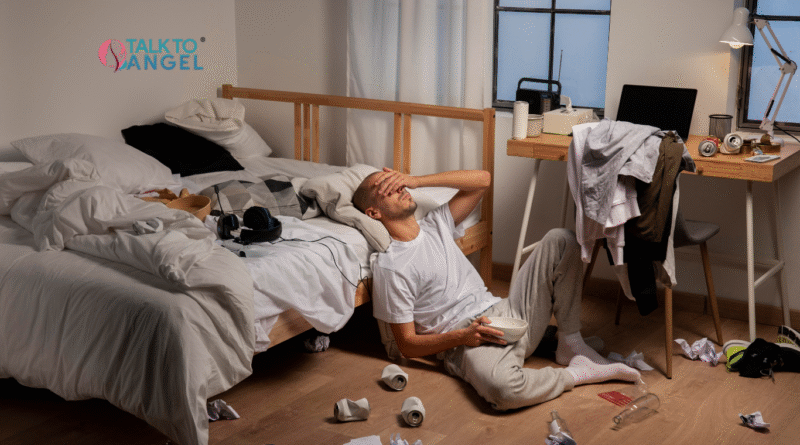Hoarding Disorder: Understanding the Psychological Clutter
The long-term psychological disorder known as hoarding disorder encompasses much more than just clutter. Characterized by an overwhelming difficulty in discarding possessions—regardless of their actual value—it results in excessive accumulation that obstructs living spaces and disrupts day-to-day functioning. The behavior is often misunderstood as laziness or messiness, but in truth, hoarding stems from deep emotional distress, cognitive dysfunctions, and maladaptive coping mechanisms. Protection, connections, psychological wellness, and physical health can all be significantly impacted.
Recognizing Hoarding Disorder: Clinical Criteria and Key Symptoms
Hoarding disorder is now recognized as a distinct diagnosis in the Diagnostic and Statistical Manual of Mental Disorders, Fifth Edition. The diagnostic criteria include:
- A persistent inability to part with or abandon belongings, no matter how valuable they are.
- Strong desires to keep things and a great deal of anguish when they must be thrown out.
- accumulation of belongings that clog and impede places used for active life.
- Significant impairment in one’s ability to perform in social, professional, or other domains.
- No other medical disease or mental illness provides a more compelling explanation for the conduct.
These symptoms must cause clinically significant distress and are often chronic, usually emerging during adolescence or early adulthood and worsening over time if left untreated.
Understanding the Underlying Causes
The root causes of hoarding disorder are complex and multifactorial, involving genetic, cognitive, and emotional components:
- Genetics and Heredity: Hoarding often runs in families. Studies indicate a higher likelihood among individuals who have a first-degree relative with hoarding or related anxiety disorders.
- Neurobiological Factors: Brain imaging studies have shown differences in the anterior cingulate cortex and insula in individuals with hoarding disorder—areas related to decision-making, emotional regulation, and reward sensitivity.
- Life Events and Trauma: Hoarding behavior is frequently triggered or exacerbated by stressful life events such as bereavement, divorce, or job loss.
- Maladaptive Beliefs: Individuals may hold irrational beliefs about the sentimental, aesthetic, or potential usefulness of items.
- Perfectionism and Indecision: Fear of making the wrong decision can paralyze attempts to discard even trivial items.
- Coexisting Mental Health Conditions: Depression, social anxiety, ADHD, and obsessive-compulsive disorder traits are common comorbidities.
The Impact of Hoarding on Daily Life
Serious repercussions spanning the emotional, social, legal, and sentimental sectors can result from unchecked hoarding:
- Physical Risks: Unhygienic living conditions, falls, and fire hazards are all made more likely by cluttered surroundings.
- Social Withdrawal: Shame and embarrassment over one’s living space can lead to isolation and loneliness.
- Family Strain: Hoarding can fuel intense familial conflict, resentment, and even estrangement.
- Emotional Suffering: Chronic stress, anxiety, guilt, and depression are frequent emotional companions of hoarding.
- Occupational and Legal Issues: Loss of employment, code violations, housing evictions, and even child custody battles may arise.
Therapeutic Approaches and Treatment Options
While hoarding disorder is resistant to quick fixes, several evidence-based treatments have shown success when approached with patience and empathy:
- Cognitive Behavioral Therapy for Hoarding (CBT-H): A specialized form of CBT that targets unhelpful beliefs about possessions, teaches sorting and discarding skills, and addresses decision-making difficulties.
- Motivational Interviewing: Useful for enhancing readiness to change, especially in individuals ambivalent about discarding items.
- Skills Training: Focused on organizing, problem-solving, and emotional regulation.
- Exposure Therapy: Gradual exposure to discarding items helps reduce anxiety and avoidance.
- Medication: Selective Serotonin Reuptake Inhibitors (SSRIs) like fluoxetine may alleviate co-occurring depression or anxiety.
- In-Home Support: Home visits by therapists or support workers can help implement changes in real-life contexts.
Recovery is frequently sluggish and necessitates a customised, caring, and multidisciplinary strategy.
Expert Insights: Dr. R. K. Suri at Psychowellness Center
At the Psychowellness Center, Dr. R. K. Suri—a senior clinical psychologist with expertise in anxiety and behavioral disorders—provides comprehensive, client-centered care for individuals struggling with hoarding disorder. His integrative approach includes:
- Thorough Psychological Assessments: Evaluating the severity of hoarding and identifying co-occurring disorders.
- Individualized CBT-H Programs: Designed to modify thought patterns, increase decision-making confidence, and implement organizational strategies.
- Family Engagement and Education: Providing coping mechanisms, conflict resolution strategies, and psychoeducation to family members.
- Holistic Support Plans: Including mindfulness practices, lifestyle changes, and relapse prevention measures.
Dr. Suri’s therapeutic alliance is grounded in empathy, respect, and collaboration, creating a safe space where clients feel empowered to reclaim control over their lives and homes.
TalktoAngel: Online Therapy for Hoarding Disorder
For individuals unable to access in-person therapy, TalktoAngel offers a confidential and user-friendly platform for managing hoarding disorder remotely. The online counselling service provides:
- Access to Trained Therapists: Professionals with specialization in hoarding, OCD-spectrum disorders, and behavioral therapy.
- Flexible Appointments: Designed to suit the needs of individuals and families with complex schedules.
- Structured Therapy Plans: Incorporating CBT, motivational coaching, and emotional support.
- Digital Tools and Resources: Worksheets, progress trackers, and educational materials for ongoing support.
- Inclusive Mental Health Care: Services available in multiple languages and cultural contexts, reducing barriers to care.
TalktoAngel bridges the gap between need and access, offering effective support in a stigma-free, non-intrusive environment.
Supporting a Loved One with Hoarding Disorder
Family and friends often struggle with how best to support someone with a hoarding disorder. It is crucial to:
- Practice Compassion: Avoid judgment or confrontation, which can exacerbate anxiety and shame.
- Set Realistic Expectations: Change is gradual; be patient with setbacks.
- Encourage Professional Help: Guide them gently toward therapy without ultimatums.
- Engage in Joint Problem-Solving: Collaborate on small decluttering tasks.
- Educate Yourself: Understand the psychological underpinnings of the disorder to provide informed support.
Conclusion
A severe mental illness that has a significant impact on people and their families is hoarding disorder. It’s not just about items—it’s about identity, safety, fear, and control. With specialized therapeutic interventions, empathetic professionals like Dr. R. K. Suri at Psychowellness Center, recognized as the best mental health wellness clinic in Delhi, and accessible digital platforms like TalktoAngel, recovery becomes not only possible but sustainable. By embracing compassion, knowledge, and structured support, individuals can begin to shed the emotional weight behind their possessions and rediscover clarity, functionality, and self-worth.
References
American Psychiatric Association. (2013). Diagnostic and statistical manual of mental disorders (5th ed.). https://www.psychiatry.org
Mayo Clinic. (2023). Hoarding disorder. https://www.mayoclinic.org/diseases-conditions/hoarding-disorder
International OCD Foundation. (2022). https://iocdf.org/hoarding/
Steketee, G., & Frost, R. O. (2014). Stuff: Compulsive Hoarding and the Meaning of Things. Mariner Books.
Tolin, D. F. (2011). Buried in Treasures: Help for Compulsive Acquiring, Saving, and Hoarding. Oxford University Press.
Mataix-Cols, D., et al. (2010). Hoarding disorder: A new diagnosis for DSM-5? Depression and Anxiety, 27(6), 556–572. https://doi.org/10.1002/da.20693
Frost, R. O., & Hartl, T. L. (1996). A cognitive-behavioral model of compulsive hoarding. Behaviour Research and Therapy, 34(4), 341–350. https://doi.org/10.1016/0005-7967(95)00071-2
Ayers, C. R., & Dozier, M. E. (2015). Behavioral treatment of hoarding disorder: A review. Clinical Psychology Review, 40, 11–24. https://doi.org/10.1016/j.cpr.2015.05.001
Saxena, S., & Maidment, K. M. (2004). Treatment of compulsive hoarding. Journal of Clinical Psychology, 60(11), 1143–1154. https://doi.org/10.1002/jclp.20080




